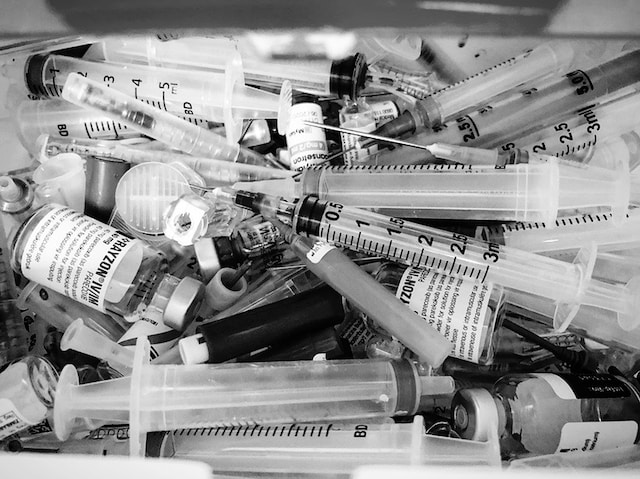
Sharps containers must be disposed of appropriately to guarantee the safety of healthcare staff, patients, and the environment. If they are not disposed of properly, sharps such as needles, syringes, and lancets represent a considerable danger of harm and infection. This piece will explore methods for the efficient and secure disposal of sharps containers, focusing on adhering to the appropriate norms and laws.
Always Use Containers Approved for Sharps
The proper disposal of sharps begins with the use of approved containers specifically designed for this purpose. These containers are built to withstand punctures, prevent leakage, and are clearly labeled with the appropriate biohazard symbols. When potentially infectious products are contained in containers with the appropriate stamp of approval, the danger of needle stick injuries is significantly reduced.
Do Not Overfill
It is vital to avoid filling containers for sharps to their maximum capacity in order to maintain the structural integrity of the containers and to prevent the possibility of inadvertent leaks or punctures. Needle stick injuries are more likely to occur during the disposal process if the containers are overfilled to their maximum capacity. Always be sure to follow the instructions that the manufacturer has supplied, and under no circumstances should you fill the container past the amount that is specified. When a sharps container approaches its designated fill level, it should be promptly replaced with a fresh one. Adhering to the recommended capacity and promptly replacing full containers helps ensure the safety of healthcare professionals and waste management personnel.
Containers Should Be Locked Down and Sealed
It is very important to securely lock and seal a sharps container after it has been used up or has reached the point where it has to be thrown away. It is important to securely close the container to prevent unintentional openings when transported or handled. While some containers have built-in locking methods, others need extra tape or closing systems. Please ensure the container can’t be opened in any way that can expose someone to sharps, and keep it well sealed.
Observe the Rules and Regulations of Your Community
Proper sharps container disposal is subject to specific regulations and recommendations that may vary based on your community and healthcare facility. It is essential that you become well-versed in these rules and guidelines and that you adhere to them religiously. Instructions on correctly labeling, transporting, and managing sharps containers can be included in the local guidelines. Compliance with these rules helps guarantee that disposal techniques are safe and responsible for the environment.
Make Use of Authorized Methods of Disposal
To ensure that sharps containers are disposed of appropriately and safely, this task should only be performed using procedures that have been approved. It is common practice for healthcare institutions to have contracts with approved medical waste disposal businesses that specialize in managing and eliminating sharps containers. These businesses adhere to stringent processes to reduce the possibility of contamination and guarantee that they are under the relevant local rules. It is necessary to make use of these approved services to dispose of sharps containers in a responsible manner.
Provide Healthcare Professionals with Education and Training
Appropriately disposing of sharps containers demands the involvement and cooperation of every healthcare staff member. Provide healthcare professionals with education and training on the necessity of following sharps disposal standards and the possible dangers associated with the inappropriate disposal of sharps. Encouraging proper disposal techniques by providing regular training and reminders is important. Healthcare institutions can lower the risk of accidents connected to sharps and encourage appropriate disposal of sharps if they cultivate a culture of safety and responsibility within their facilities.
Conclusion
Disposal of sharps containers in a safe and effective way is necessary to safeguard healthcare personnel, patients, and the environment from the dangers connected with incorrect sharps disposal. Healthcare facilities can guarantee the right management of sharps waste by using sharps containers that have been approved, avoiding overfilling the containers, securing and closing the containers according to local legislation and standards, using disposal methods that have been permitted, and training healthcare employees. These techniques reduce the likelihood of infections and injuries caused by needle sticks and also help make the hospital environment safer and more environmentally friendly. It is important to show a commitment to the health and safety of healthcare professionals and the community by implementing these policies.


